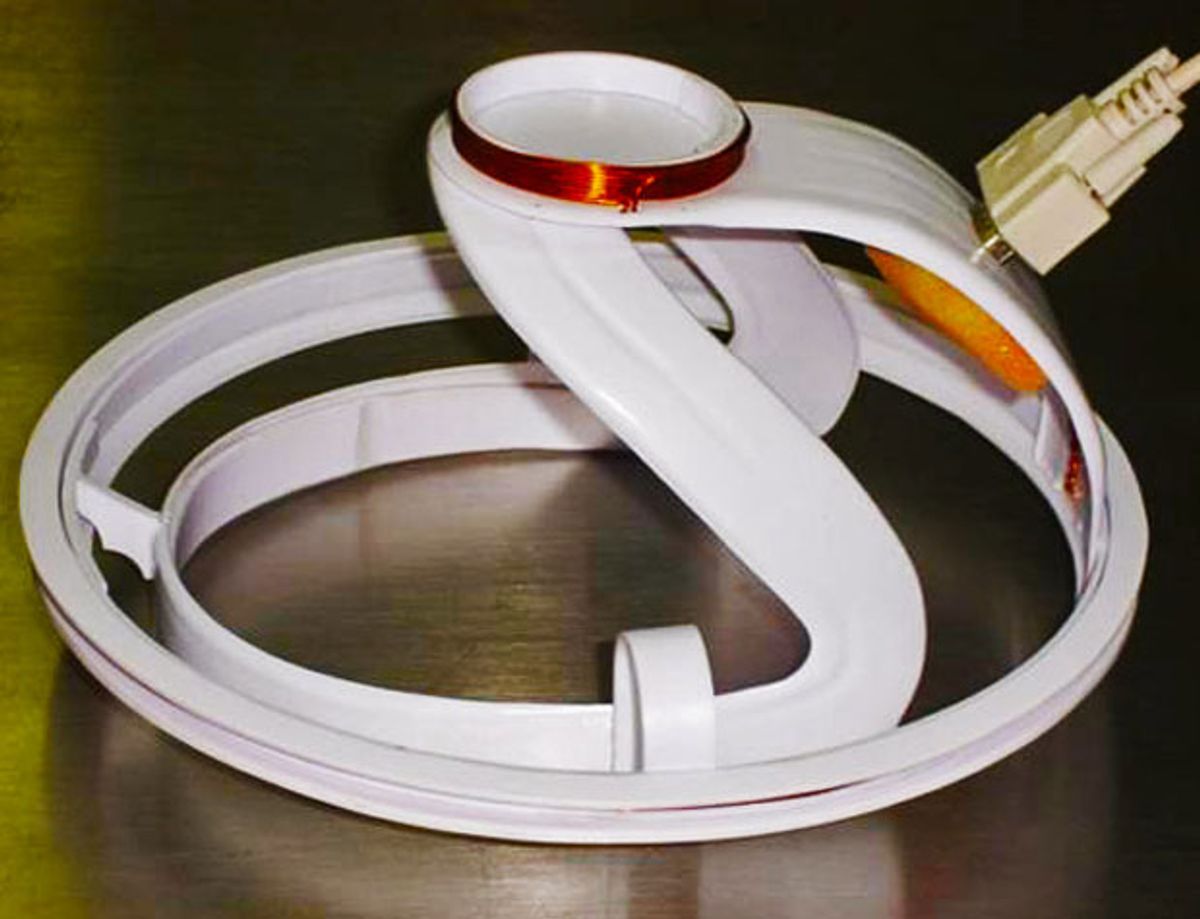
Researchers have developed an inexpensive helmetlike device that scans the brain with radio-frequency signals to immediately reveal signs of brain damage. They claim that using this tool could be a quick, cheap way to tell whether a person has a potentially life-threatening brain injury that would require a hospital visit for detailed medical imaging. This would be especially useful in rural settings, where the nearest big hospital is often many kilometers away.
The technology is simple to use and could cost as little as a blood-pressure measurement device, says Boris Rubinsky, professor of mechanical engineering at the University of California, Berkeley, who has been developing the technique for various applications over the past six years.
The invention is based on the idea that healthy and abnormal brain tissue conduct alternating current differently. In tests on humans, reported in the 14 May issue of PLoS ONE, Rubinsky and his colleagues could differentiate between healthy and injured brains by measuring this difference. Among the damaged brains, they could distinguish whether there was tissue swelling or internal bleeding.
Symptoms of swelling or bleeding in the brain are not immediately obvious. The sure way to know is with magnetic resonance imaging or computed tomography (CT) scans. But the detailed images generated from those techniques might not be necessary in many situations. And in rural areas or in economically disadvantaged parts of the world, such as Mexico and India, those imaging technologies are expensive and not readily available, Rubinsky says.
“Say a child falls down in an accident,” he says. With no outward signs of brain trauma, “if the parents are poor and far from a local hospital, they may not take the child to the hospital. But if there was a very inexpensive device locally in the village to determine that there is an injury, they’d take the child.”
The helmetlike device has two coils that are placed on either side of the head. One coil emits radio-frequency signals at 1 to 200 megahertz. These signals travel through the brain to reach the receiving coil. The impedance of different tissue changes noticeably over a specific narrow frequency range, Rubinsky explains. In a normal brain, this change shows up over a certain set of frequencies, while in tissue infused with saline or blood it occurs over other frequency ranges. A computer algorithm analyzes the signals from the receiver coil to spot this shift, thereby determining if the brain tissue is normal or if it contains excess blood from internal bleeding or excess fluid indicative of swelling.
Rubinsky’s colleague César A. González, a professor at the National Polytechnic Institute’s Superior School of Medicine, in Mexico, tested the device on 46 healthy volunteers and 8 patients with brain damage at a military hospital in Mexico. He confirmed the results with CT scans.
Rubinsky says that data from the device could be sent via cellphone to a central hospital processing facility to avoid the need for a computer at local rural sites. The technology could be adapted to measure brain health and could also be used for detecting tumors and infections, he adds.
The new technology could be more cost-effective than other similar techniques, such as electrical impedance tomography, which makes it suitable for developing countries, says Te Tang, a biomedical engineering professor at Florida State University. Tang adds that the pilot study is encouraging.
However, says Kenneth Foster, professor of bioengineering at the University of Pennsylvania, “to succeed, the method would have to be reliable and also suitable for use by relatively unsophisticated operators.” Proving its reliability will require more-extensive, better-designed studies.
About the Author
Prachi Patel is a contributing editor to IEEE Spectrum. In April 2013, she reported on an improvement to optogenetics, the use of light-controlled genetics to manipulate brain circuits.
Prachi Patel is a freelance journalist based in Pittsburgh. She writes about energy, biotechnology, materials science, nanotechnology, and computing.



